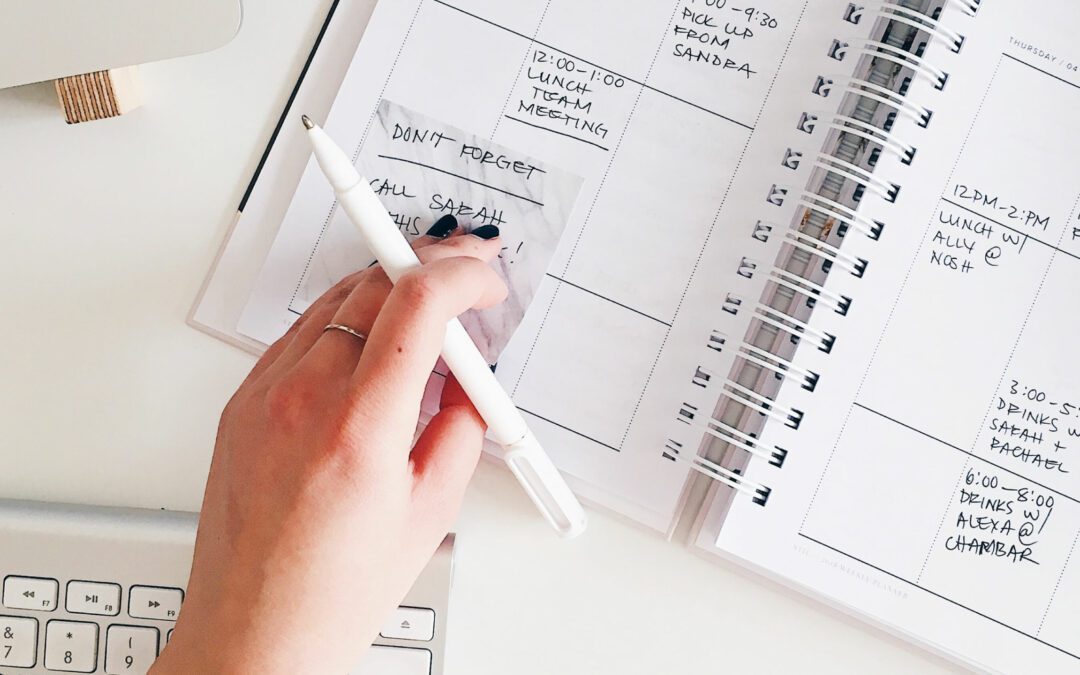So I had this one Instagram post earlier in the month that got quite a few comments. It always surprises me what resonates – the picture wasn’t all that great. No one would mistake me for being an IG expert or “influencer” or anything like that (don’t care to be), and I don’t pretend to understand why a shot of an empty IKEA bag can get tons of “likes” but a fabulous Margaret Atwood quote doesn’t.
But in this particular post, I wrote a few thoughts about the big question that comes up every January: “What’s the best planner?” They seemed to hit a nerve. I ruminated a bit that I should have saved these thoughts for the blog, then moved on.Fast forward to last week, when there was a small tsunami of clients wanting/needing to walk through ways of developing a meaningful connection to their shiny new planners – or perhaps the shiny new planners they hoped to procure. When I see patterns pop up I figure it’s time to dig deeper and start writing, and what the heck, I’m going to repurpose a bit of that IG material too. It’s my blog, after all.
The person-planner relationship can be confusing. There are tens of thousands of options: dated, undated, paper, digital, month view, week view, day view, pretty stickers, inspiring quotes, plain and black, fancy and floral…you get the idea. How on earth do you choose something?
And once you’ve chosen, what exactly do you put into it? That’s a more loaded consideration than you might think, because is a planner the same thing as a calendar? A to-do list? A place to journal about goals? All of the above? What goes where, and what about things that happen every day?
People get into serious love/hate relationships with their planners. I’ve seen clients pull them out of backpacks as if they were handling a smelly, dead fish. Someone recently told me they aren’t on speaking terms with their planner. I’ve seen others fall quickly and hopelessly in love with beautiful, hard-bound tomes full of stylish sans-serif font and silk ribbons for marking their place in time.
It’s easy to get your head turned by a pretty day organizer, or the one that pops up on your Facebook feed promising you all sorts of fantastic productivity (“Have the year where you’ll finally achieve all of your dreams!!!”). Lots of those can be, how do they say it…all hat, no cattle?
It makes sense to talk about the what-to-put-in-it part first, and then you’ll have some better clues of what to choose. In my view, planners serve three purposes:
- as a time container for appointments and tasks;
- as a way of keeping you oriented to linear time; and
- as an external hard drive for your brain.
I’ve talked about time containers before. You have people to see, things to do, and you can’t just show up at the doctor’s office any old time and expect to get right in. Nor can you cram 100s of appointments into one span of time (say, 48 hours) – you have to choose the best, most important stuff and give it time homes. So your planner is that container, in the calendar sense.
Should you give tasks a spot on the calendar? Sure, if you think you might ignore or forget them otherwise. If you have a hard time carving out space to eat lunch, why not assign it a block if it could make a difference? Just like if you routinely forget where your keys are, you can give them a home on a hook next to the door. Assigning spaces also makes clear what is available for other things, like chilling out and watching Netflix. Noting deadlines (where the time home is chosen for you) helps you decide how and when you’re going to meet them.
The orientation piece is a little different, and it involves looking at this planner. Gazing with love and curiosity by scanning the day, the coming week, even the past week, and stretching out through the month. Sort of like when you get off the subway in a new city, walk up the steps into the sunlight, and look all around to get your bearings. What’s to the left, to the right…what’s on the horizon?
This could be love.
I think this is the magic of a planner relationship a lot of people totally miss out on, and it’s a shame. Every morning, there’s an opportunity to be inquisitive, open that thing up, and ask, “What day is it, and what do I get to do? What’s ahead for me? What happened yesterday that impacts now?” You might further dialog with Dear Planner, smiling about that upcoming birthday party, sympathizing a little over the dinner with your mother-in-law, or collaborating on a time for making some important phone calls. Time orientation can be a comforting ritual you share with your planner.
The external hard drive part is easy to explain: unless you’re still in 6th grade, your head cannot keep track of everything you have to do. Combining the first two purposes above (assigning time homes, gazing at the time surroundings) results in a reliable, consistent way to access the information you need, when you need it. You can lean on the system and let it support you.
Let’s move on to the selection process. I’m kind of thinking there needs to be a Tinder or Bumble for planners, but until someone steals my idea, choose a planner that appeals in terms of price and appearance. Choose something you’ll engage with. Most people need to have a decent amount of space to write (or type) something. The cheapy ones with just a full month view probably aren’t helpful for much more than seeing what day it is (although that’s not something to be dismissed).
If you want a little journaling space, look for some blank pages. If you think you might fall into a black hole and miss a week here or there, you might go for something undated where you fill your own in. Bear in mind that complication does not equal success.
There is no perfect planner, as there are no perfect people. A planner does not do tasks for you, drive you to your meetings, make you sit down at your desk, or get your tax paperwork in order by March 1. So don’t load those expectations on it. As in any relationship, unrealistic idealism can set you up for profound disappointment.
On the other hand, a good planner will not force you to use all of its many features – just the ones you need. It will never chastise you for missing a week or for forgetting it in the back seat. It might feel lonely, but it won’t hold a grudge. You can always apologize and start over again. Sometimes…it doesn’t even care if you flirt with a different one, and go back and forth. But that’s between you guys.
Remember, when you develop your planner relationship you have an opportunity to engage with the recorded replication of your life. You see what you get to do on any given day (“ooh, lunch with the cute guy from Accounting!”). Ultimately, you’re less likely to miss out on all the cool stuff that sets you up for success, and peace of mind.




